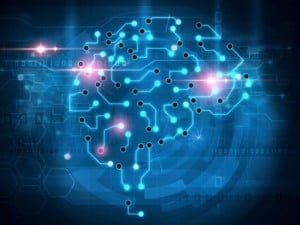SAP Knowledge Management Introduction
In the technology and business sectors, people are surrounded by buzzwords: ERP, SAP, SOA, you name it. However, these acronyms simply describe ways companies leverage technology for competitive business advantage. The systems are designed to reduce costs, streamline operations, increase revenue, and transform your organization [1].
Since ERP applications such as SAP have entered the business world, enterprises have struggled with one area: capturing and then converting employee “know how” into ERP solutions (also known as Knowledge Management) [2] [3]. I refer to that ability to leverage both employee “know how” and to collaborate with the broader customer community as ERP III. For a detailed explanation of the different versions, see ERP vs. ERP II vs. ERP III Future Enterprise Applications.
There is a simple and inexpensive way to implement ERP III, enabling your ERP application to transform your enterprise into a learning organization. ERP III is a way to capture employee “know how,” developing business solutions that create real competitive advantage.
In this post, we look at this concept in the context of SOA (Service Oriented Architecture). However, any area in the enterprise can apply and adopt ERP III.
Background for SOA, Knowledge Management, and ERP III
The ERP revolution began with integrating the “back office” functions of the enterprise: purchasing, ordering, financials, HR, distribution, inventory, etc. In ERP, the whole enterprise relies upon a common set of data from a single database — a single version to rely upon or correct. Next came ERP II, extending the ERP application from the back office to the extended supply chain, the web, the banks, and beyond.
Enter SOA (Service Oriented architecture): the idea of “universal” and completely reusable application services that can be “plugged in” to other applications. This SOA architecture would then allow for the rapid assembly of dynamic process and application chains as business and opportunity needs arise. SOA (or sometimes SaaS) holds tremendous promise to enhance and extend the idea of ERP II even further, but this concept will take time and tremendous effort to do effectively.
ERP III and the Learning Organization
The next generation of business transformation is ERP III, or the customer-integrated, ERP-enabled learning organization.[4] However, SOA’s success and timeliness are directly tied to how well an enterprise is able to create a “learning organization” within its development and IT ranks.
This learning organization approach is one of the key backbones to a successful SOA initiative as well. The cornerstone of how effectively SOA re-uses policies and procedures, service standards, and validated service development is directly correlated to how well the enterprise’s developers are able to collaborate and coordinate their efforts (especially in an ad hoc manner).
A learning organization starts with knowledge management and is best supported by a culture which generates and also consumes information.
Service Oriented Architecture, or SOA, requires a level of participation, collaboration, and information exchange like never before to be successful. True SOA also requires a blending of technology, collaboration, and cooperation with highly structured standards to achieve a significant level of trust in the development work. While many suggest that this level of collaboration, integration, and reliability within the enterprise may take enterprises as long as ten years to accomplish, the methods defined in this paper can dramatically reduce that time and effort. [5]
What is Knowledge Management? [6]
A learning organization starts with knowledge management and is best supported by a culture which generates and also consumes information. When this article was originally published, I could not find a widely accepted definition for knowledge management. Because of this, I provided my definition below, and some clarification, which helps to distinguish knowledge from information. As of 2023, the majority of online articles provide similar or the same definitions.
“Knowledge Management is not information management. It is the process of transforming unstructured data into contextual information and then applying that information. Knowledge as “contextual information” is the ability to draw on information and combine it with experience by applying it to a particular situation or circumstance when it is needed. Knowledge Management is the process of capturing, codifying, and disseminating information so that it provides some value in a particular context.” Bill Wood, IITRun Consulting, originally drafted in the late 90’s, updated in 2006.
My personal opinion is that the reason the Knowledge Management definition lacked consensus is that most “knowledge management” discussions surrounded information management. People referred to the codification or classification of information as “knowledge.” Often, people referred to “knowledge management” as the systems that help to capture and codify knowledge, but this was still just information in a structured context. They did not incorporate knowledge into the enterprise (or create a learning organization) by creating methods to take that information and apply it in a value-added context for day-to-day activities. Information can only become knowledge when it is applied while considering experience and context– it is NOT a system.
Systems can facilitate knowledge management. However, systems contain information, not knowledge. Knowledge is the application of information in a relevant context. Systems do not add context; situations add context.
For the enterprise to continue finding value in ERP implementation and other technology investments, the enterprise must change. For effective enterprise-level change to take place, technology must support the capture, organization, and implementation of the unstructured knowledge and information contained in people’s heads, or jotted down on crib sheets. This is not an easy task.
Knowledge is not data and information. Data consists of facts, observations, occurrences, numbers, and things that are objectively perceived.
Information is a collection of various aggregated or synthesized data points. From there, knowledge is the mix of information, experience, and context adding value [to a particular situation]…
Knowledge Management is the systematic process by which an organization maximizes the uncodified and codified knowledge within an organization.
Original author(s) unknown, further adapted and modified by Bill Wood.
Knowledge Management, Collaboration Tools, and ERP III – Current and Future State
To initially implement SAP, you need both structured and unstructured data, along with the processes from legacy systems and “institutional knowledge.” You then place this information into a highly structured application. At its most effective, the initial SAP implementation captures some cost savings, process improvements, and revenue generating opportunities. However, no initial implementation is able to capture the vast unstructured information and knowledge that resides in people’s heads.
Information can only become knowledge when it is applied while considering experience and context– it is NOT a system.
Even when you implement the application and possibly some of the ERP II enhancement, the SAP enterprise current state can still deliver even more substantial benefit without significant cost. However, capturing and leveraging that benefit requires an enterprise-wide, cultural transformation. People must begin to both act and think differently. This change needs to occur not just in the larger enterprise, but within the IT organization itself.
To extend the SAP application’s usefulness and achieve greater benefit, you need to first capture useful “unstructured” information. Then, you need to organize, classify, or categorize it. Finally, you need to translate it into more useful application solutions. This process also facilitates the implementation of SOA within the SAP environment.
To reach this future state, you first need to create a collaborative learning organization. A learning organization is an organization that is constantly acquiring and applying new information and thereby gaining knowledge. Once that information is captured, it can then be structured into solutions: some process-based, and others technology-based. Some of the solutions can be translated into additional, value-added SAP enhancements, additional SAP functionality, or market-based business opportunities around innovation and customer focus.
A Collaborative Knowledge Management Model for a Learning Organization
Based on my time at Grant Thornton (and later Hitachi Consulting) as the SAP Knowledge Manager, I used the best resources I could find in the arena of “Knowledge Management.” Based on that research, and leveraging the pioneering efforts of other true knowledge managers, I created the model you see below. It is consistent with much of the literature that exists today. However, in the late 90’s when it was developed, and then in 2000 when it was instituted, it was a pioneering effort.
1) Raw Data: The unstructured data, ideas, “crib notes,” and thoughts that we have. However in this instance, it is the raw data surrounding the job or responsibility that the individual performs within the enterprise. Sometimes these are the “workarounds” to get something done when you run into obstacles or roadblocks. Other times they are just shortcuts or techniques to perform a job or function.
2) Organized Information: The process of capturing and classifying that raw data. This is where the “knowledge bases” and other types of information systems come in. Many enterprises make it this far. Sometimes these are the “workarounds” to get something done when you run into roadblocks or obstacles. Other times they might be the shortcuts or techniques to more efficiently perform a job or function.
3) Acquired Information Experience: This is the interaction with the organized information. This can be through search functions, employed taxonomies, reports, or other methods of accessing the organized information. This is after the capture of the information in steps 1) and 2) above, and involves its wider availability than in the individual who originally developed or “held” the knowledge or information. Few organizations or enterprises make it much further than this. However, this is the beginning of the true learning organization.
4) Applied Experience (Knowledge!): This is the practical application of the organized information after it has been acquired. Whether this acquisition is through word of mouth, training, or some type of information management system– or through a “knowledge base”. This is where the cost savings, revenue opportunities, continuous process improvement opportunities, and real competitive advantage begin to come to fruition.
5) Refined Experience (accurate intuition and forecasting): This is more of the inherent “knowing” what to do in a broad variety of contexts that may not be directly related to the task or issue at hand. In this stage, an individual can draw on that level of inner experiences mixed with intuition and make the right decision or provide the right answers when there is not enough information to make such a determination under normal circumstances. This can also be a type of “making the complex appear simple.”
A simple and effective method can capture the unstructured information, organize and classify it, and then disseminate it in such a way as to create a true learning organization. This method, outlined below, will help move your organization.
Practical and Inexpensive Ways to Move Toward ERP III and SOA Today!
Since I am not a big fan of reinventing the wheel, I look for existing ways to solve current problems. To that end, the key to moving ahead on ERP III is to create a collaborative culture. From the collaborative culture, you create a learning organization using the existing collaborative tools. The answer also lies in some of the popular web technologies.
Enter the “cool” and the “fun” factor in the enterprise: social networking. Through participant knowledge, this technology can create a collaborative environment around cost savings, process improvements, system enhancements, revenue opportunities, customer acquisition, customer retention, customer experience, enhanced products, better services, and general business improvement for competitive advantage. The same technology options that can enable SOA are available to capture the uncodified end user “raw information.”
Forums
Forums or other social media outlets can also capture SOA-related standards, common development services, and code or object reviews. They can capture SOA best practices while facilitating broader development community participation in standards, services, and object re-use policies. In a threaded forum, the collaborative nature, and the ability to offer code improvement suggestions, bug fixes, standards exchanges, or development and solutions discussions, can prove invaluable to an organization’s SOA initiatives.
To make this reality, you need to leverage tools and define a process to capture the unstructured information . Once information is captured, methodically move that to process changes or to structured application solutions within SAP or an SOA initiative.
Defined below is a set of free tools, along with proposed solutions on how to apply those tools. Please keep in mind, this is ONE solution option. There are many more and there are also some very specific and interesting ways to incorporate this type of solution DIRECTLY into the SAP application. Here is one method to get started:
1) ANY networked PC (you don’t really need “heavy duty” hardware here unless you just must have blistering performance)
2) Download the free Uniform Server application that works on Windows. It contains Apache Web Server, MySQL, and PHP (including PHP My Admin): http://www.uniformserver.com/. You only need to unzip this file to a local directory, and then double-click (or execute) the Start Server file.
3) Download and Install the latest PHP Bulletin Board open source application: http://www.phpbb.com/downloads/. (Set up the MySQL database and copy the web files to the proper local directory of the newly created web server from step 2). To see the forums in action, go to the PHPBB site at http://www.phpbb.com/community/.
4) Structure the Groups to match the business department (create a new forum “group”). Then, create four sub-areas under each department link: A) Cost Savings, B) Revenue Generation, C) Process Improvement, D) System Changes.
5) Structure additional groups to match SOA service development. An SOA topic with sub-forums for A) standards, B) services, C) objects, etc.
6) Have the users create the hyperlinks in their SAP user menu. A hyperlink for that departments topic in the bulletin board is easy to add to the SAP user menu (right click on the favorites menu, then add a web address).
7) Adjust department and user goals to include evaluating forum contributions, based on points earned for participation and aligned with the forum structure that applies to them (for example, cost savings, revenue generation, SOA standards, etc.).
8) For the system changes option, create an inexpensive interface to read the MySQL table for this area and generate a separate approval or response process. This way the changes, the responses to those change requests, and the details of the change request are captured in an easily searchable database.
9) To produce the most useful solutions, follow a “PDCA” process (Plan, Do, Check, Act). After a discussion thread has reached a certain point (the exchanges have stopped, reduced to a trickle, or reached a specific date deadline), have someone review the entire threaded discussion, capture the most salient posts (by using the hyperlinks to the posts), and then summarize those hyperlinks into a single post. Call a meeting with the key stakeholders, review the salient points, and produce a position paper or some other summary document–and then publish it for final review.
The PHPBB forum software contains several developer-implemented modifications that are fully supported at no charge [7]. For example, they have a “cash” modification that simply adds a point system based [8] on how active a forum participant is. In combination with the ability to develop groups, and to have moderators approve posts, this is an effective way to manage the information “clutter.”
Goals can be based on the number of points. The department supervisor or a manager can serve as the moderator to review and approve posts. This ensures that the submissions are high quality.
Over time, in areas such as manufacturing maintenance, or any other similar situations, you can capture enough quality information to create solution databases. This would facilitate the introduction of PM (Plant Maintenance) [9] for both preventive and predictive maintenance programs.
The searchable nature of the forums allows for quick and easy information retrieval in the short term. Over a longer period of time, the information can be structured and implemented as various types of system solutions to address recurring themes or various business opportunities.
Collaboration, virtual discussions, and even “debates” will refine various business issues or problems. In the future, as the issues arise again, going back through the old dialogs may yield a new perspective or future direction. In the end, the cultural change to a learning organization will begin, and along with it new information and ultimately new knowledge for competitive advantage.
ERP III, Knowledge Management, Collaboration, and Learning Organizations – The Conclusion
Competitive advantage, the emergence of the extended enterprise through SOA, and the extended supply chain demand greater collaboration. This collaboration is a key component of creating the learning organization.
SOA and additional benefit realization from an SAP implementation depend heavily on the ability of an organization to capture competitive advantage from the knowledge of the employee base. Even skilled IT contractors must rely heavily upon the acquired knowledge and wisdom of those who actually perform the enterprise’s processes on a day-to-day basis.
No matter how skilled an IT professional may be, some issues will always escape detection or discovery because of the nature of intangible knowledge that exists within any individual or organization. To leverage the IT investment in SAP and implement an effective SOA program, you need to find ways to create collaborative communities that expose that knowledge. This collaboration can become the basis of a learning organization that is key to transforming both the enterprise and the IT infrastructure that supports it. Social networking can advance that collaborative culture and is one of the most cost-effective ways to accomplish the task of organizational transformation.
~~~~~~~~~~~~~~~~~~~~~~
[1] SAP as a Change Enabler https://www.iitrun.com/sap-as-a-change-enabler
[2] Knowledge Management—Emerging Perspectives: http://www.systems-thinking.org/kmgmt/kmgmt.htm
[3] Knowledge Management Journal – Business process modeling through the knowledge management perspective: http://www.emeraldinsight.com/Insight/ViewContentServlet?Filename=Published/EmeraldFullTextArticle/Articles/2300100303.html
[4] Learning Organization from Wikipedia – http://en.wikipedia.org/wiki/Learning_organization
[5] Hitachi Consulting, where I previously worked in the SAP practice as a functional consultant and the SAP Knowledge Manager has published a white paper on SOA that explains both its promise and its drawbacks; SOA – CIO Savior or Nemesis, http://www.hitachiconsulting.com/downloadPdf.cfm?ID=414
[6] One important distinction to note here is that this paper will focus on the implementation of the “learning organization” in practical ways throughout the enterprise. This “learning organization” approach has far reaching affects beyond SOA, it has the ability to transform business through the use of enabling technologies.
[7] For example, see this forum which lists many of the validated and approved modifications, along with full support information and enhancement options. http://www.phpbb.com/community/viewforum.php?f=15
[8] Forum with information for installing, updating, and enhancing or modifying the “cash” (i.e. points) modification to the PHPBB forum. http://www.phpbb.com/community/viewtopic.php?p=539420
How to access the modifications while the modification database is unavailable (it is currently undergoing a complete update and re-write). http://www.phpbb.com/community/viewtopic.php?f=15&t=527421
[9] For example, see SAP’s Plant Maintenance solution: http://help.sap.com/saphelp_47x200/helpdata/en/66/158661547611d182cc0000e829fbfe/frameset.htm







Hello there! This is my first comment here so I just
wanted to give a quick shout out and say I truly enjoy reading your blog posts.
Can you recommend any other blogs/websites/forums that go over
the same topics? Thanks!